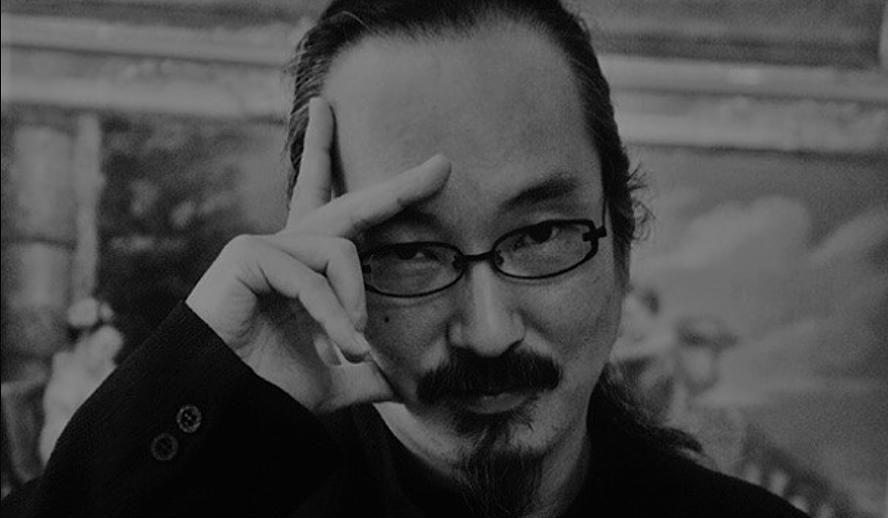Table of Contents

Video Version of this Article
Photo/Video: Satoshi Kon
There are certain instances in one’s life, especially pertaining to the arts, where a creation transcends admiration and takes on an entirely new form within the heart of the observer. An expression is able to circumvent our established expectations to such an extent that it grips us wholeheartedly, leaving us with a newfound feeling of intoxication. Enchanted, we become ravenous for more of the expression that cascaded onto the conscious mind, almost as if it were a drug. This effect has perplexed audiences for centuries, dating back to the earliest of mankind’s artists. Some are fixated on the autodidacticism of ancient cave drawings, some are entrenched within the world of classical pianists like Bach and Mozart, and others are firmly rooted in the classical period of Italian Baroque painting, featuring the likes of Caravaggio and Giordano. In any example, the finest works of art have the capacity to eclipse morality, ingraining itself within the foundational essence of an audience member, altering how we perceive art and its chosen medium, as a whole.
Related article: ‘In the Heights’ – Behind the Scenes and Full Commentary/Reactions from Cast & Crew
Related article: The Hollywood Insider’s CEO Pritan Ambroase: “The Importance of Venice Film Festival as the Protector of Cinema”
One such admired creator is Satoshi Kon: animator, screenwriter, director, and, in the truest sense of the word, artist. The Japanese filmmaker is absolute in his control over his chosen medium; criminally under-utilized “genre” of animation. Traditionally, animation has been a tool used, in its majority, for the entertainment of children, relegated to dull and safe caricatures of narrative expression. Kon takes this theory and flips it on its head. By using animation, he is able to tell the most extraordinary of tales, oftentimes instilling some of man’s greatest philosophical musings within his child-like depiction of humanity. From the dreamscapes of ‘Paprika’ to the bustling nightlife of Japan’s homeless in ‘Tokyo Godfathers’ Kon’s work is a riveting, gripping, and enthralling, truly generational talent.
The Origins of Satoshi Kon
Born on October 12th, 1963 in Sapporo, Hokkaido, Japan, Kon knew from a young age he was destined for animation. He attended Hokkaido Kushiro Koryo High School where he formulated aspirations to become an animator, specifically of the manga variety (a comic-book-like artform popular amongst many Asian cultures). This aspiration would quickly be realized as Kon would debut his first-ever published manga titled Toriko in 1984 while studying graphic design at Musashino Art University. Following this achievement, Kon would go on to work as a personal assistant for filmmaker Katsuhiro Ôtomo. The pair quickly became colleagues and the young Satoshi was signed on to work for a little project titled, ‘Akira’ (For those who don’t know, ‘Akira’ is widely regarded as the greatest work of animation of all time). Kon would then go on to publish another manga titled Kaikisen and write the script for Otomo’s live-action TV show ‘World Apartment Horror.’
With his feet now firmly planted within the entertainment industry, Kon would go on to have ample success in his short tenure. He would work as an animator and writer for a number of feature films and shows including ‘JoJo’s Bizarre Adventure’ in 1993 and 1991’s ‘Roujin Z.’ Kon would also use this time to continue publishing manga, an extremely physically taxing endeavor that would push his body to the ultimate limits. Spending nearly every waking moment working, Kon’s body succumbed to Hepatitis A, forcing him to be hospitalized for more than three months. Due to this illness, Kon also developed a serious case of Jaundice, coloring his skin a foul yellow-ish hue. This debilitating occurrence led Kon to reconsider his workload and how he went about collaboration. Because of this, Kon would launch into his solo career writing, directing, and animating feature-length films, starting with the inception of his magnum opus ‘Perfect Blue’ in 1997.
Related article: MUST WATCH – The Hollywood Insider’s CEO Pritan Ambroase’s Love Letter to Black Lives Matter – VIDEO
Subscribe to The Hollywood Insider’s YouTube Channel, by clicking here.
The fantastical themes of a Satoshi Kon picture
Throughout all of Kon’s filmography, there is a clear overarching purveyance to a number of ideas and concepts. The most broad-stroke thematics are tied to love and duality. This is not to say that Kon’s work is overly romanticized or highly reliant on metaphor, in actuality nothing could be further from the truth. As with all Satoshi Kon works, there is an extreme level of nuance and more than a handful of layers to peel back, but the overall themes remain the same. Love is the only true unifier of humanity and each person has a certain level of multiplicity, or duality. These themes, although basic, are amplified to an absolutely mind-numbing extent through the whimsically horrifying fantasies Kon is able to imagine and bring to life.
No matter how fantastic the setting, no matter how imaginative the concept, Kon always returns to the simple nature of humanity. In ‘Perfect Blue’ love is perverted, obscured through the eyes of a super-fan lusting after pop idol Mima Kirigoe while her own closest friend plots to overthrow her because of internalized jealousy. Here, love is a tool used to identify the most superficial and negative instances of humanity. Duality is represented through Mima herself, she wants to move on and become an actress but struggles with her self-image and acceptance. She’s a woman living a life that no one will be happy with, if she does one thing people will want her to revert to the past, if she does another, people will label her a failure. She struggles with her private and public lives, grappling with the balancing act of what she shares with the world and what is meant to be extremely personal.
There is a child-like sense of wonder instilled throughout Satoshi’s work, a feeling that evokes emotion from all who observe a Kon film. The lessons are identifiable, comparable, and relatable to everyday life, but are framed in the most imaginative and spectacular ways. Be it a transexual woman and her two homeless companions struggling to care for a baby they found in a trash heap in ‘Tokyo Godfathers’ or the pain of a life once lived, reflecting on lost love and all that you’ve gone through until now in ‘Millenium Actress,’ regardless, the unifying characteristic is always love. Duality comes from the situations that characters are put into, eliciting responses that show their defining traits, good or bad. However, at the end of the story, all that’s left is love.
Limited Time Offer – FREE Subscription to The Hollywood Insider
Hallmarks of an original Kon Film
Satoshi Kon has an extremely unique visual style. His animation is often done with a low frame rate in mind, giving the characters and landscape a hand-drawn feel and look. Only in ‘Tokyo Godfathers’ was the frame rate high enough that modern animation tools could have an effect. As a more comedic film, ‘Tokyo Godfathers’ uses the upped frames per second to turn characters into expressive caricatures, using exaggerated facial features to create humorous and flamboyant interactions which really sets it apart from the rest of his filmography. In general, Kon’s work is more similar to the early 90’s style of animation.
Works like the aforementioned ‘Akira,’ ‘Mobile Suit Gundam,’ and ‘Cowboy Bebop’ are good comparisons visually as they all utilize similar techniques in color and character design. But, Kon decides to base his stories in reality which allows him to demonstrate his incredible stylistic understanding of real settings. ‘Grave of Fireflies,’ the 1993 film from Isao Takahata is the best comparison visually, as both masterpieces utilize similar technical and conceptual procedures when approaching a reality-based animation.
Aside from the visual grandeur that is a Kon film, the truest hallmark of the namesake is his unparalleled editing. Satoshi Kon is the absolute, unadulterated master of transitions. The incredible usage of match cuts transforms an interesting scene into a mind-blowing scene. Kon is able to visually match the cut of one moment with a totally unlike moment in the next scene, creating some perplexing, interesting, and nearly incomprehensible transitions. Drawing influence from the live-action film ‘Slaughterhouse-five’ directed by George Roy Hill, an adaptation of Kurt Vonnegut’s novel of the same name, Kon is able to adeptly match scene cuts with graphic matches and mirrored time periods.
Related article: The Hollywood Insider’s CEO Pritan Ambroase: “The Importance of Venice Film Festival as the Protector of Cinema”
Related article: The Masters of Cinema Archives: The Hollywood Insider Pays Tribute to ‘La Vie En Rose’, Exclusive Interview with Director Olivier Dahan
Related article: – Want GUARANTEED SUCCESS? Remove these ten words from your vocabulary| Transform your life INSTANTLY
The opening scene of ‘Paprika’ has five interwoven dream sequences, each with its own distinct editing tricks to create unique visual transitions. Kon uses abstract borders and ques to slide seamlessly into the next moment in time. Some of these techniques used don’t have established titles, they were invented by Kon and have been so challenging to apply that they have yet to be reused by any other animator. Satoshi Kon is likely the greatest editor of modern time and that title will never be eclipsed.
Kon’s Filmography, discussed;
‘Perfect Blue’ (1997)
After a pop singer attempts a career change, she slowly loses her mind dealing with an obsessive stalker. That’s the plot in its entirety, obviously, there are wrinkles and bumps along the way, but that’s the overarching through-line. This simplicity is what separates Kon from every other filmmaker and writer on Earth. Each of his works is contextually simple, consisting of a single plot thread that drives the production while slowly adding subtle layers as the film progresses. Through this simple design, Kon is able to paint a vivid picture of a very human struggle in the short run time of only 81 minutes, a trait consistent through all of his feature films.
‘Perfect Blue’ is a near flawless representation of how media blurs the lines between reality and fantasy. As the dichotomy between Mima’s persona and her private life begins to converge, a series of twists and turns are introduced, furthering her descent into madness. Filmmaker Darren Aronofsky famously took influence from this film, using exact shot replications of ‘Perfect Blue’s bathtub scene in his 2000 film ‘Requiem for a Dream.’ Aronofsky used much of Satoshi’s conceptual genius as influence considering ‘Black Swan’ is a near-perfect replication of ‘Perfect Blue’ thematically and narratively. ‘Perfect Blue’ is an astoundingly chilling story of the perversion of media and the access it grants to a personal life, only gaining more meaning as social media grows ever-more present in today’s society. This is a perfect film to use as an introduction to Satoshi’s larger filmography. Most anyone can see that regardless of its visual style and quality, ‘Perfect Blue’ is a magnum opus, truly one of the greatest cinematic works of all time.
Related article: A Tribute to Martin Scorsese: A Complete Analysis of the Life and Career of the Man Who Lives and Breathes Cinema
Related article: Record Breaker: Anime ‘Demon Slayer’ Beats ‘Spirited Away’ as The Biggest Japanese Box-Office Ever
‘Millennium Actress’ (2001)
The plot of ‘Millennium Actress’ is nothing short of incredible. Framed around the simple concept of the filming of a documentary film about the life of an elderly actress detailing the greatest lost love of her life. The film, although simple in premise, is one of the hardest of Satoshi’s works to follow, narratively. This is not a negative aspect, in actuality, it’s a great thing. The film weaves throughout time, morphing the actresses’ roles and her real life, creating a sort of amalgamate of lives. Our sense of reality, as an audience, begins to blur and we quickly lose track of time, drifting through different roles the actress had played. The end result is an extremely compelling and visually stunning achievement of cinematic poetry. Kon’s incredibly personal animation style fits this story perfectly as we jump from a spaceship blasting off to feudal Japan. His art style knows no bounds and bolsters any narrative it represents, but it does so especially well in this case.
‘Tokyo Godfathers’ (2003)
The third feature film in Satoshi’s filmography is the most unlike the rest of his productions. Basing itself in a more grounded plot structure, ‘Tokyo Godfathers’ opts to forgo many of the Kon signatures and completely changes animation style. ‘Tokyo Godfathers’ follows a group of three homeless people, an extremely close-knit family unit, although none are actually related. The group finds a baby discarded in a trash pile on Christmas Eve, an occurrence that the leader considers a “miracle.” The tale that follows is one of love, finding a home, and the redemption of humanity in one of the most impactful narratives ever to grace the silver screen.
Related article: A Tribute to Hayao Miyazaki: Enchanted Edifice of the Master Storyteller
Related article: ‘Avatar: The Last Airbender’: The Best Cartoon for Diversity, Inclusivity and Representation Ever
‘Tokyo Godfathers’ is more humorous than the other Satoshi Kon films but that does not make it any less metaphorically powerfully. If anything, this is Satoshi’s most allegorical film, delving into social, familial, interpersonal, mental health, and a host of other issues. The absolutely extreme level of care Satoshi takes while building his characters is nothing short of incredible. Although each character is flawed, widely considered an outsider in the world, they all are worthy of being loved and of redemption. ‘Tokyo Godfathers’ is a beautiful story, encapsulating the goodness of mankind, no matter how far fallen and removed from grace. Truly mandatory viewing for any cinephile.
‘Paprika’ (2006)
Incredible, fantastic, flamboyant, innovative, unparalleled. ‘Paprika’ is a one-of-a-kind creation likely to remain the pinnacle of narrative-centric animation for the rest of time. In one of the most original scripts ever crafted, ‘Paprika’ centers around a device called the “DC Mini,” a medical tool that allows for a new invasive type of therapy. The Mini allows a person to observe and interact with a patient’s dreams, bringing them to life in a whimsical and sometimes terrifying meta-reality. Unfortunately, the device falls into the wrong hands, and its intended purpose is subverted with its newfound intent to wipe out reality, turning the world into a dark nightmare.
‘Paprika’ is truly revolutionary. It’s one of the greatest films of all time, regardless of genre, and most certainly one of the best animations in human history. The innate skill that pervades all of Satoshi’s work is most prevalent here. As the story is based on a dream reality where the audience is able to suspend their disbelief, Kon creates an unreservedly mad universe where anything is possible. Satoshi’s creativity shines throughout the entirety of the film’s 90 minutes run time. Visions of indescribable collages of dreams and nightmares set the stage for the mind-numbing dream-scape that is ‘Paprika.’ The film’s stylistic creativity swaths deeply into the script and concept, as well. As a writer, director and animator, it’s extraordinary to think of the level of skill and creativity necessary to even conceptualize something this abstract, let alone produce it so successfully. From beginning to end, ‘Paprika’ is marvelous and awe-inspiring.
Related article: A Tribute to Anders Thomas Jensen – The Brilliant and Bizarre Storyteller & Pioneer of Danish Cinema
Related article: A History of ‘Godzilla’, Coming Full Circle with ‘Godzilla vs. Kong’
The untimely death of Satoshi Kon
At the far too young age of 46, Satoshi Kon passed away in Tokyo, Japan on August 24th, 2010. Satoshi lost a grueling battle to pancreatic cancer. He left behind a wife, Kyoko (whom he lovingly named the lead in ‘Millenium Actress’ after), and a number of unfinished works. Satoshi penned a manuscript in anticipation of his death, a painful and real glimpse into the artist’s struggles with his health and some musings on his psyche and beliefs. This manuscript presents a clear and present look at the man behind the art, the mind behind the dreams. Thankfully, since his passing, Satoshi’s work has undergone a type of audience renaissance enjoying a newfound cult-like following. As with so many great artists, his genius was only fully realized after his death. Although Satoshi Kon was only able to produce four feature films in his life, those four films would prove to build a stronger filmography than most directors achieve with hundreds of attempts.
Closing remarks
The pride of Japanese animation, Satoshi Kon is a true revolutionary. Before leaving us, Satoshi gifted audiences some of the greatest narrative works in the history of humanity and, to this day, they continue growing in reverence and admiration. He will remain on the Mt. Rushmore of animated films for years to come and, likely, for the rest of history. The name Satoshi Kon is one to be spoken within the same breath as humanity’s greatest artists. Wolfgang Amadeus Mozart, Richard Wagner, Andy Warhol, William Shakespeare, Vincent Van Gogh, Satoshi Kon.
By Tyler Sear
Click here to read The Hollywood Insider’s CEO Pritan Ambroase’s love letter to Black Lives Matter, in which he tackles more than just police reform, press freedom and more – click here.
An excerpt from the love letter: The Hollywood Insider’s CEO/editor-in-chief Pritan Ambroase affirms, “The Hollywood Insider fully supports the much-needed Black Lives Matter movement. We are actively, physically and digitally a part of this global movement. We will continue reporting on this major issue of police brutality and legal murders of Black people to hold the system accountable. We will continue reporting on this major issue with kindness and respect to all Black people, as each and every one of them are seen and heard.
Just a reminder, that the Black Lives Matter movement is about more than just police brutality and extends into banking, housing, education, medical, infrastructure, etc. We have the space and time for all your stories. We believe in peaceful/non-violent protests and I would like to request the rest of media to focus on 95% of the protests that are peaceful and working effectively with positive changes happening daily. Media has a responsibility to better the world and The Hollywood Insider will continue to do so.”
Ways to support Black Lives Matter Movement to end systemic racism
More Interesting Stories From The Hollywood Insider
– Want GUARANTEED SUCCESS? Remove these ten words from your vocabulary| Transform your life INSTANTLY
– Compilation: All James Bond 007 Opening Sequences From 1962 Sean Connery to Daniel Craig
– Do you know the hidden messages in ‘Call Me By Your Name’? Find out behind the scenes facts in the full commentary and In-depth analysis of the cinematic masterpiece
– A Tribute To The Academy Awards: All Best Actor/Actress Speeches From The Beginning Of Oscars 1929-2019 | From Rami Malek, Leonardo DiCaprio To Denzel Washington, Halle Berry & Beyond | From Olivia Colman, Meryl Streep To Bette Davis & Beyond
– In the 32nd Year Of His Career, Keanu Reeves’ Face Continues To Reign After Launching Movies Earning Over $4.3 Billion In Total – “John Wick”, “Toy Story 4”, “Matrix”, And Many More
satoshi kon, satoshi kon, satoshi kon, satoshi kon, satoshi kon, satoshi kon, satoshi kon, satoshi kon, satoshi kon, satoshi kon, satoshi kon, satoshi kon, satoshi kon, satoshi kon, satoshi kon, satoshi kon, satoshi kon, satoshi kon, satoshi kon, satoshi kon, satoshi kon, satoshi kon, satoshi kon, satoshi kon, satoshi kon, satoshi kon, satoshi kon, satoshi kon, satoshi kon, satoshi kon, satoshi kon, satoshi kon, satoshi kon, satoshi kon, satoshi kon, satoshi kon, satoshi kon, satoshi kon, satoshi kon, satoshi kon, satoshi kon, satoshi kon

Tyler Sear is an athlete and writer with a philosophical perspective to film. With aspirations to direct feature length films, Tyler brings a critical eye and philosophic approach to film, striving to give unbiased opinions while campaigning for equality and impartiality in Hollywood, today. This sense of morality makes Tyler uniquely qualified to address timely issues and recent releases within film. By tackling interesting topics, Tyler aligns with Hollywood Insider’s intentional mission to ignore sensationalized rumor and strive to present factual and entertaining content.








